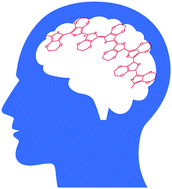Organic bioelectronics for neural interfaces
Abstract
Organic bioelectronics offers important opportunities to study complex biological systems, such as neural networks, and develop new biomedical tools for the diagnosis and treatment of brain diseases. This Highlight is focused on recent progress in neural recording and stimulation enabled by using conducting polymers as active elements in bioelectronics, with an emphasis on the underlying mechanisms for the improved signal transduction capabilities at organic/neural interfaces. These studies are classified into two categories, electrochemical electrodes and electrochemical transistors, according to their operating principles. Future challenges and directions towards organic/neural interfaces are discussed as a conclusion.

- This article is part of the themed collection: Bioelectronics

 Please wait while we load your content...
Please wait while we load your content...